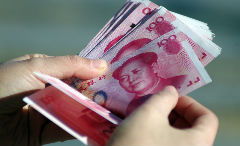Commercial banks to help ease economic slowdown pressure
2018-08-16
China Daily
China’s 260-trillion-yuan ($37.67 trillion) banking sector, the world’s largest by assets, has once again been assigned a heavy responsibility in easing the economic slowdown pressure. But this time they should consider more factors before taking action, said analysts.
Commercial banks, an important part of the nation’s financial system, are expected to pump funds more proactively to support China to achieve the annual growth target. However, they need to be cautious under the tight scrutiny requiring lending activities to be “out of the shadows”, they said.
Given some signs of economic cooling in July, with headwinds from a worsening trade dispute with the United States, investment in property and infrastructure construction will be key to stabilizing domestic growth, said Liu Qiao, director of the Guanghua School of Management of Peking University.
That means ensuring funds get to the real economy is urgent. “And under that growth model, the country is much more reliant on financing,” Liu said.
The banks successfully fulfilled a similar task a decade ago — to inject funds into the real economy, when some other major economies fell into recession amid the global financial crisis.
“The banks now have multiple tasks. They are expected to make cheap loans to small and micro-sized companies with relatively high default risks. Also, they are called to purchase local government bonds for infrastructure projects and the repayment of large matured debts,” said a senior risk manager with China Minsheng Bank.
“Different from a decade ago, all the tasks should be done under the higher regulatory standards to cut financial risks,” he said, speaking on condition of anonymity.
To encourage bank lending, the central bank has injected liquidity in many ways including cutting the reserve requirement ratio. It did have an impact when the cost of borrowing money from one another, or the interbank market interest rate, decreased to a two-year low level.
Tan Songheng, an investment manager with FuDian Bank, a joint-stock commercial bank in Yunnan province, said: “Money has not yet been needed in the real economy. Banks are unwilling to make loans to smaller companies or buy high-risk bonds, as they are busy fixing their balance sheets, especially to maintain capital adequacy ratio and control the nonperforming loan ratios.”
By the end of the second quarter, Chinese commercial banks’ average nonperforming loans increased to 1.86 percent of their total lending, up from 1.74 percent by March. The core tier-1 capital adequacy ratio dropped to 10.65 percent from 10.71 percent a quarter earlier, the China Banking and Insurance Regulatory Commission reported on Aug 13.
Total outstanding commercial bank loans reached 103.1 trillion yuan, 2.46 times as large as the country’s total GDP by the second quarter, according to CBIRC data.


